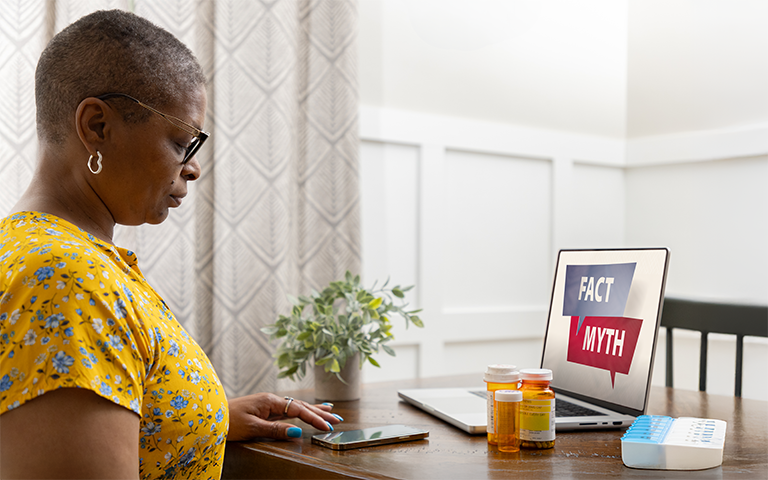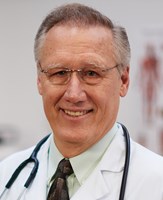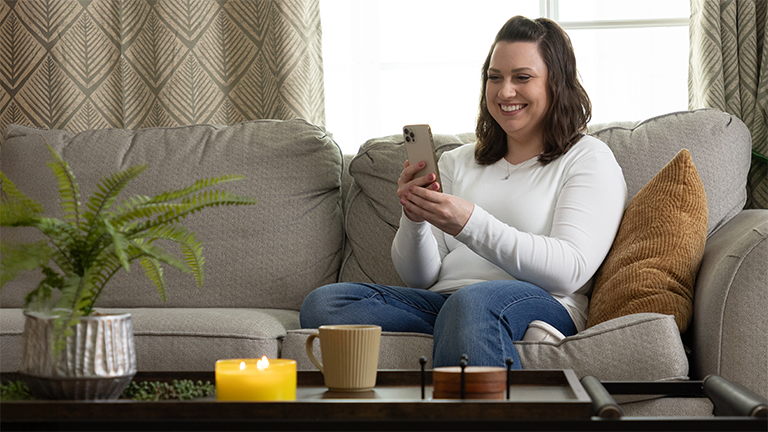With CHM’s Virtual Care Solution, members have access to virtual primary care physician (PCP) visits (included as part of their CHM membership), making HealthTap a great resource to stay well! Virtual Care Solution (VCS), powered by HealthTap, provides easy access to primary care virtual visits for CHM members* However, deciding to see a doctor virtually raises questions about how quality care can be accomplished across a screen. With Dr. Geoffrey Rutledge, chief medical officer and HealthTap founder, we’ll tackle the most common myths about virtual healthcare.
Myth #1: Isn’t virtual primary care only needed by people who don’t have a primary care physician (PCP)?
Dr. Rutledge: People who already have a good relationship with an in-office PCP can also benefit from having a virtual PCP. The convenience, accessibility and lower cost of virtual care makes virtual care valuable for anyone, even those who already have an office-based PCP. A virtual PCP will coordinate their care with the in-office doctor, send copies of their virtual visits to the in-office doctor, and refer to their in-office doctor when an in-person visit is needed. The in-office PCP can also continue to provide an annual physical examination when it’s indicated.
Dr. Jacobson: It’s often standard for patients to wait an average of 28 days to get into their in-person family physician. Patients can be seen sooner or have a first visit virtually. Plus, if a patient doesn’t really need to go to the emergency department or urgent care, but shouldn’t wait for several weeks, a physician-to-physician phone call can often help facilitate getting them in more quickly, as both doctors will have a common understanding of the patient’s condition, need, and degree of urgency.
Myth #2: Isn’t virtual care considered lower quality care?
Dr. Jacobson: Another common misconception is that virtual care is “lower quality” simply due to the format, but this wasn’t the case when standardized quality measures were compared between patients with office-only (in-person) visits and those doing virtual visits.
Dr. Rutledge: Exactly! Studies have shown equal or greater objective measures of primary care performance from remote visits compared with the same measures for in-office visits. For example, a recent study published in The Journal of the American Medical Association (JAMA) demonstrated that virtual visits were equal to or better than in-office visits for 13 of 16 objective quality measures of primary care performance. Some of those quality measures included patient conditions being well-controlled or managed, preventative measures being taken, and more.
Myth #3: Don’t I need an in-person visit to be evaluated?
Dr. Jacobson: One common myth is that a doctor must perform an in-person physical examination to evaluate a patient.
Dr. Rutledge: A thorough patient history is the most important, and often the only information that supports a doctor’s diagnosis. In fact, for routine in-office visits, doctors don’t usually do a physical examination.
When doctors do physically examine patients, it’s often done simply to connect with the patient and establish a rapport — and because it is expected. In routine practice, and when there is no suspicion of a specific problem, the elements of the physical examination are rarely done, and almost never provide information that has any impact on the delivery of care. What’s more is that there are many aspects of the traditional physical examination that can be performed via video consultation.
Dr. Jacobson: Yes, several components of the physical exam can be accomplished virtually, such as a patient measuring their own vital signs (pulse, blood pressure, and respiratory rate). Plus, many components of a physical exam can be accomplished via mobile devices, whether by direct observation through a camera, or by the patient taking a photograph of the area of concern and uploading it to the physician.
Dr. Rutledge: It’s true: doctors can advise their patients on which home measurement devices to get and how to record their readings at home or in a healthcare app. So, the need for vital sign measurements alone isn’t a reason to require an office visit.
Myth #4: Don’t doctors need to meet patients in person to establish trust?
Dr. Jacobson: A fourth common myth is that a relationship of caring and trust can only happen when a doctor meets a patient in person. However, rapport can be developed in other ways, correct?
Dr. Rutledge: Fortunately, using high-resolution video and audio technologies, doctors can develop surprisingly strong doctor-patient relationships without ever meeting their patients in the office or performing a physical examination. Patients tell us they are delighted when, during a video visit, their doctor looks at them intently, listens to what they say, and responds directly to their concerns. This patient interaction is also greatly enhanced by the lack of other distractions in the typical busy office.
*Editor’s note: Virtual care visits outside of CHM’s Virtual Care Solution are not eligible per CHM Guidelines.
References:
- Comparison of Quality Performance Measures for Patients Receiving In-Person vs Telemedicine Primary Care in a Large Integrated Health System. Baughman DJ, Jabbarpour Y, Westfall JM, et al. Comparison of Quality Performance Measures for Patients Receiving In-Person vs Telemedicine Primary Care in a Large Integrated Health System. JAMA Netw Open.2022;5(9):e2233267. doi:10.1001/jamanetworkopen.2022.33267.




